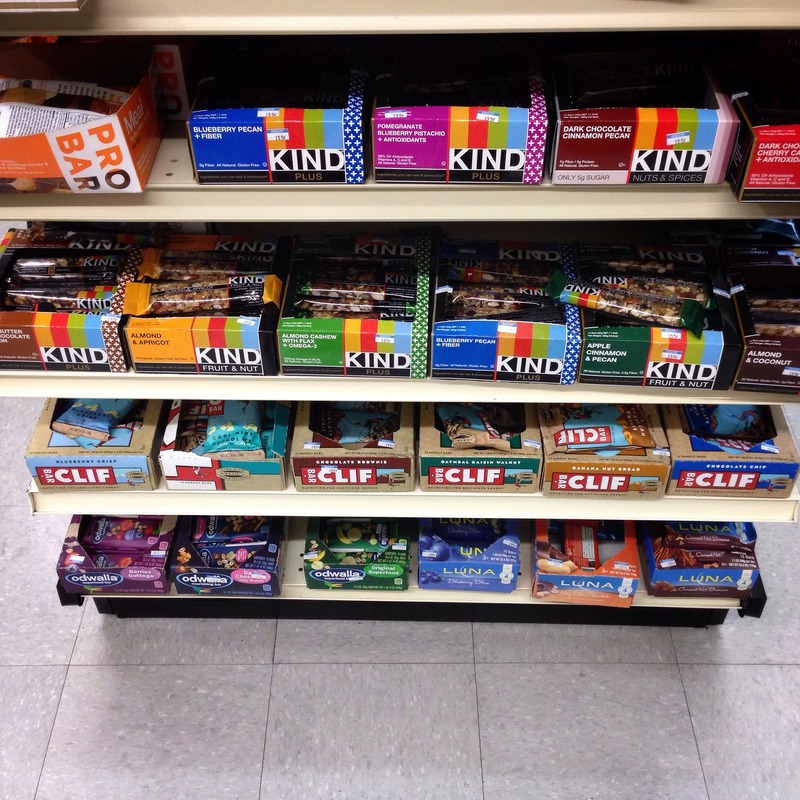Are you constantly on the move, juggling various responsibilities and activities? When you need a quick snack that won’t slow you down, energy bars are the ideal solution. With countless options available, choosing the right one can be overwhelming.
Whether you’re looking for protein-packed, fiber-rich, or vegan options, we’ve got you covered.
Before we delve into the details, let us introduce you to our very own Food For Life’s Impact Bar. It not only satisfies your hunger but also contributes to important causes such as feeding starving children, rescuing animals, and planting trees. By enjoying this delicious snack, you’ll be making a positive impact on the world. So, grab your Impact Bar now and make a difference!
Today, join us as we explore the diverse landscape of energy bars. Together, we’ll find the perfect bar to keep you fueled, nourished, and ready to conquer your day.
Energy Bars: What Are They?
Energy bars, also known as nutrition bars or protein bars, are prepackaged and portable snacks that offer a quick source of energy. They are designed to be small and easy to carry, making them convenient for busy individuals.
These bars typically contain a mix of carbohydrates, protein, and healthy fats, and some healthy energy bars may include additional vitamins and minerals for added nutritional benefits. They serve various purposes, such as providing a quick snack before or after workouts, acting as meal replacements, or offering on-the-go sustenance when a full meal isn’t possible.
Importance and Benefits of Energy Bars
Energy bars are praised for their significance and wide-ranging advantages. Firstly, their convenience and portability make them an excellent choice for individuals leading busy lives as they can be a meal replacement bar. Furthermore, healthy energy bars are rich in vital nutrients, making them nutritious and satisfying snacks. They contribute to hunger reduction, weight management, and the promotion of healthy eating habits.
The Anatomy of an Energy Bar

The foundation of an energy bar typically consists of a carbohydrate source, which can range from oats to rice crisps, serving as a rapid energy provider. In addition, an energy bar recipe can incorporate binding agents like honey, brown rice syrup, and nut butters such as soy nut butter, almond butter, and peanut butter. These ensure structural integrity while also offering healthy fats and protein.
Furthermore, energy bars frequently encompass an assortment of supplementary ingredients such as dried fruit, nuts, or seeds. These elements contribute to the overall flavor, and texture and give additional nutrients like fiber, antioxidants, and essential minerals.
Core Ingredients and Their Nutritional Values
Energy bars contain core ingredients that contribute to their nutritional value. Carbohydrates serve as the primary energy source, providing quick energy and sustained levels throughout the day. Protein aids in muscle building and repair, reducing soreness and promoting overall health. Healthy fats, found in nuts and seeds, offer sustained energy, and satiety and support brain function, hormone production, and immune health. Fiber helps with feelings of fullness and blood sugar regulation, while energy bars can also provide essential vitamins and minerals like vitamin E, magnesium, and zinc for overall health benefits. The best energy bars are a convenient and delicious snack choice that delivers important nutrients.
A Brief History of Energy Bars 200
Energy bars emerged in the 1960s to meet the needs of athletes and hikers seeking quick energy sources. Initially, these bars consisted of basic ingredients like nuts and dried fruits, emphasizing high-calorie content for an energy boost. However, taste was often lacking, leading to limited popularity among the general population.
Evolution over time
Over time, energy bars underwent an evolution in the 1980s and 1990s, becoming more appealing with the introduction of diverse flavors and textures. They also became more accessible to a wider audience beyond athletes and hikers. The focus shifted towards providing sustained energy and nutritional value rather than just high-calorie counts.
Pioneers in the Energy Bar Industry
Notable pioneers in the energy bar industry include PowerBa which introduced a peanut butter and honey-flavored bar favored by athletes. Another influential brand was Clif Bar which focused on creating organic and nutritious energy bars with enjoyable flavors.
Today, the energy bar market offers a vast array of options. Brands cater to specific dietary requirements. Some bars are tailored to particular activities like running or hiking, while others serve as quick, on-the-go meal replacement bars. It is necessary to carefully read labels and select bars that not only taste good but also provide the necessary nutrients and sustained energy for individual needs.
Exploring the Modern Energy Bar Market

Overview of Prominent Brands
Within today’s market, several leading brands stand out with each energy bar recipe offering a diverse selection of flavors and types to cater to various preferences. Notably, the Impact Bar, Clif Bar, KIND, RXBAR, and Larabar have gained significant popularity and are among the public’s favorite energy bars.
The Impact Bar is most notable for how proceeds are donated to causes such as feeding children, planting trees, and rescuing animals. The energy bar is gluten-free, low sugar, and vegan, making it a top choice as an energizer, meal replacement, or just a general snack. With flavors such as blueberry sunflower, chocolate and peanut butter, and coconut, it’s no wonder why the Impact Bar is so popular.
Clif Bar is among the most favored energy bar brands, boasting an extensive range of flavors such as peanut butter or can even come with chocolate chips! Additionally, they offer a line of protein bars tailored to those looking to enhance muscle development. The brand prides itself on utilizing organic ingredients while avoiding artificial sweeteners and preservatives.
KIND has gained recognition for its fruit and nut-based bars, available in various flavors, including almond coconut, dark chocolate cherry, and peanut butter. They also offer protein bars and granola bars. All KIND bars are crafted with non-GMO ingredients.
RXBAR has emerged as a newer player in the energy bar market, distinguishing itself by producing protein bars with minimal, straightforward ingredients. Their bars are gluten-free, soy-free, and dairy-free, appealing to individuals with food allergies or sensitivities. Flavors they feature include chocolate sea salt and peanut butter.
Larabar, another prominent fruit and nut-based energy bar brand, features delectable flavors like apple pie, and cashew cookie, or can even come with chocolate chips. Their bars cater to vegans, adhere to gluten-free guidelines, and are made with non-GMO ingredients.
Rising Stars in the Energy Bar Market
Good to Go is an up-and-coming energy bar brand that offers an assortment of flavors, including cocoa coconut and cinnamon pecan. Their bars are gluten-free, vegan, and crafted with wholesome ingredients like pumpkin seeds and almond flour.
Hum Nutrition specializes in protein bars crafted with plant-based ingredients, such as pea protein and brown rice protein. Their bars are gluten-free, vegan, and free from artificial sweeteners or preservatives, appealing to health-conscious consumers.
Understanding the Label
When it comes to choosing an energy bar, it is essential to comprehend the information provided on the label. By carefully reading the label, you can make an informed decision about which bar aligns with your dietary requirements.
How to Interpret an Energy Bar Nutrition Label
To interpret an energy bar nutrition label effectively, begin by examining the serving size. This detail indicates the portion considered as one serving. Next, assess the calorie and macronutrient breakdown, including protein, carbohydrates, and fat. It is advisable to be mindful of the sugar content, as certain bars may contain high levels of added sugars. Additionally, pay attention to the fiber content, as it significantly influences digestion and satiety.
Navigating Allergen Warnings
For individuals with food allergies or sensitivities, attentiveness to allergen warnings on energy bar labels is paramount. Common allergens to watch out for include tree nuts, peanuts, soy, and gluten. If you have a food allergy, it is crucial to thoroughly read the label before consuming any energy bar. If you have questions or concerns about allergen warnings, reaching out to the manufacturer can provide further clarity.
Choosing the Right Energy Bar for You

Energy bars have gained popularity as a go-to snack for individuals with busy lifestyles. However, with the wide array of options available, finding the right one can be a challenge.
Factors to Consider:
Calories: The appropriate calorie count depends on factors such as activity level, age, and weight. For a quick snack, opt for an energy bar containing approximately 200 calories. If you require a more substantial option, consider bars closer to 300 calories.
Macronutrient Composition: Evaluate the protein, carbohydrates, and fat content of the bar. Select a higher protein content for post-workout snacks, while bars with more carbohydrates are better suited for sustained energy.
Fiber: Prioritize bars with high fiber content, as it aids in prolonged satiety.
Sugar: Opt for bars low in added sugars to avoid energy crashes and potential health concerns.
Ingredients: If you have specific dietary restrictions or allergies, thoroughly read the label and choose bars that cater to your needs.
Recommendations Based on Lifestyle and Dietary Requirements:
For Athletes: Choose protein-rich bars such as Clif Bars or RXBARs for rapid post-workout protein replenishment.
For Vegans: Enjoy the expanding selection of vegan options from brands like Food for Life’s Impact Bar, Larabar, KIND, and Impact Bar, offering a variety of flavors suitable for vegan diets.
For Gluten-Free: Look for bars clearly labeled as such, such as Impact Bar, Good to Go, or Hum Nutrition protein bars, ensuring they are safe for individuals with celiac disease or gluten sensitivities.
For Low-Sugar: Explore bars like Impact Bar, which is crafted with natural ingredients and completely free from added sugars. It provides a lower-sugar option without compromising taste.
Future Trends in the Energy Bar Industry
As consumer awareness about health and nutrition increases, the energy bar industry is adapting to meet evolving demands.
Clean Label Movement:
The Clean Label Movement is gaining momentum as a prominent trend that focuses on natural ingredients, transparent labeling, and the exclusion of artificial additives. Brands like Food for Life’s Impact Bar are already offering clean-label choices, featuring all-natural and organic ingredients.
Personalized Nutrition:
With technological advancements, personalized nutrition is becoming a progressively popular phenomenon. This entails utilizing data from wearable devices and DNA testing to develop customized nutrition plans tailored to an individual’s specific requirements. As research progresses, we can anticipate even more personalized nutrition options emerging in the energy bar market. These bars will cater to individual dietary preferences, activity levels, and health goals.
Conclusion

To conclude, energy bars have become a practical and wholesome snack choice, particularly for individuals with busy lifestyles. The energy bar market boasts an abundance of brands, each offering an array of flavors, ingredients, and health benefits.
It is crucial to be label-savvy and select an energy bar that aligns with your specific dietary preferences and requirements. With a rising focus on health consciousness, more consumers are gravitating towards bars featuring natural and organic ingredients.
At Food for Life, we take pride in presenting our Impact Bar, an organic and vegan energy bar free from added sugars and artificial additives. Enjoying this delicious and nutritious snack also means contributing to meaningful causes, such as rescuing animals, feeding underprivileged children, and promoting reforestation. So grab yours today, ensuring you get your fix of energy and do good at the same time.
Whether you’re an athlete, a vegan, or someone seeking a low-sugar option, there’s an energy bar tailored to suit your preferences and lifestyle. Stay fueled and energized on your journey!
FAQ
An energy bar is a snack food specifically crafted to deliver a rapid boost of energy and a feeling of fullness.
The main ingredients in an energy bar vary, but they often contain combinations of nuts, seeds, grains, dried fruits, and natural sweeteners like honey or agave.
Energy bars are a practical and healthy snack for anyone with a busy and active lifestyle. They can boost energy levels, promote muscle recovery, and supply vital nutrients and vitamins.
When selecting an energy bar, it is important to take into account your specific dietary requirements and personal preferences. Reading the label carefully so you can identify bars that contain natural and organic ingredients. You can then make an informed decision and choose an energy bar that aligns with your needs and values
Some top energy bar brands to consider include Clif Bar, KIND, Larabar, RXBAR, and Food for Life’s Impact Bar.
Not all energy bars are suitable for people with dietary restrictions, as some may contain gluten, dairy, or other allergens. It’s important to read the label carefully and look for bars that cater to your specific dietary needs.
When reading an energy bar nutrition label, look for bars that are low in added sugars, high in fiber and protein, and made with natural and organic ingredients.
The energy bar industry is set to experience upcoming trends, such as the Clean Label Movement and Personalized Nutrition. The Clean Label Movement focuses on natural ingredients and transparent labeling, while Personalized Nutrition utilizes data from wearable devices and DNA testing to craft customized nutrition plans catering to an individual’s distinct requirements. These trends reflect the growing consumer demand for natural, transparent products and personalized dietary solutions within the energy bar market.




